Matador Network's Blog, page 1022
September 3, 2019
Spaghetti Bolognese isn’t Italian
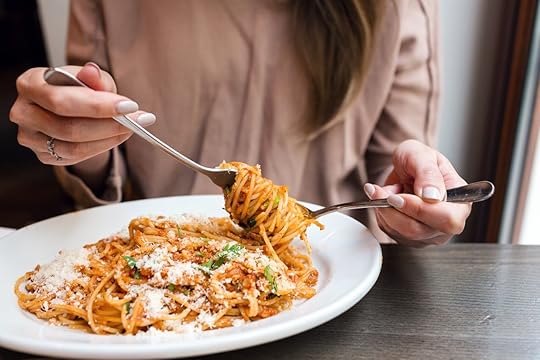
The mayor of Bologna, Italy, is on a crusade to correct a worldwide misapprehension: Spaghetti Bolognese is not actually an Italian dish. Why has he decided that this will be the pasta-covered hill he wants to die on? To defend the honor of his beloved Emilia-Romagna, a region of Italy famous for cured meats, Parmigiano-Reggiano, and Bologna’s world-class gelato.
Virginio Merola recently got on his high horse to declare that no, spaghetti Bolognese does not come from Bologna, thank you very much. He took to Twitter, where he wrote that he is “collecting photos of spaghetti Bolognese from around the world in relation to fake news.” He intends to display the photos at FICO Eataly World, a food theme park in Bologna that features cooking demonstrations and pop-up restaurants.
Merola then visited Italy’s RAI radio station where he told the host, “Spaghetti Bolognese doesn’t actually exist, yet it’s famous the world over.”
Not to “well, actually,” the mayor of Bologna, but spaghetti Bolognese does exist. How could it not if it’s “famous the world over”? It seems that Merola’s real beef (pun intended) is with the pervasive myth that spaghetti Bolognese was invented in his city.
He is, of course, correct that Italians generally disavow this dish; it has no place in genuine Italian cuisine and is more popular in North America and other parts of Europe. Its true origins are unclear though prevailing wisdom attributes its invention to Italian immigrants.
The truth is a bit more complicated than the easier-to-swallow myth: You will find ragù — a catch-all term referring to any meat sauce left to simmer on the stove for many hours — all over Italy. Recipes differ in every region throughout the country, though the most familiar version is likely ragù alla Bolognese, a tomato-based meat sauce that does originate in Bologna. Ragù alla bolognese is almost always paired with a noodle with more surface area to catch the sauce than spaghetti, like tagliatele or lasagna.
While meat sauces were eaten in Italy as far back as the Roman Empire, tomato-based ragù alla bolognese probably didn’t emerge until the 18th century, in a town near Bologna called Imola. There, a chef named Alberto Alvisi, who served the town’s cardinal, likely prepared the original version. Some 100 years later, recipes for ragù alla bolognese began to appear in cookbooks, and in 1982, the Italian Academy of Cuisine registered the official recipe at the Bologna Chamber of Commerce.
Outside Italy, “Bolognese sauce” refers to any tomato-based meat sauce, but the official recipe calls for a strict set of ingredients, including milk, pancetta, beef, and tomato paste. Merola certainly has a point that what outsiders consider ragù alla bolognese is probably nothing like what is served in restaurants in Bologna.
However, others from the region, including Matteo Lepore, a member of the Bologna city council’s marketing department, don’t feel quite as hostile toward spaghetti Bolognese. He told Lifegate that while the dish’s origins are a complete myth, “we’d better make the most of it” by drawing tourists to the city and introducing them to the culinary triumphs that did actually originate in Bologna, like tagliatelle and tortellini.
While it might be attention-grabbing to disparage spaghetti Bolognese as “inauthentic,” this dish is simply the result of the evolution of Italian food as it spread throughout the world, picking up admirers along the way. Like all good food rooted in strong traditions, Bolognese sauce must be allowed to grow and change with the times, instead of staying stagnant in the past. 

More like this: 67 types of Italian pasta everyone needs to try before they die
The post Mayor of Bologna calls spaghetti Bolognese ‘fake news’ appeared first on Matador Network.

The best airport hotels in the world

The most convenient way to bail on early morning airport commutes and drab roadside chain motels is to stay nearly adjacent to your departure gate. Airport terminal hotels are increasingly common around the world, and many of them are full-on luxury experiences despite the fact that the main reason for staying in them — late-night arrivals and early-morning departures — generally means you won’t have time to appreciate all of the amenities. But if you end up with a super long layover or a dreaded flight cancellation, you could do worse than staying at these airport terminal hotels. Just try not to sleep in and miss your flight, considering you’re right next door.
1. Fairmont Vancouver Airport — Vancouver, British Columbia

Photo: Fairmont
The Fairmont Vancouver Airport has the brand’s standard trimmings. An upscale restaurant in the lobby hosts live music and a bustling bar scene. The rooms are hyper-modern and kind of feel like corner-office suites. What makes this hotel worth the stay, beyond its 30-second walk to the ticketing check-in counters, though, is the view. From your room’s massive bay windows, you can spot the differences between a 737 and an Airbus A320 with the help of a complementary “plane spotting guide.”
2. TWA Hotel at JFK International Airport — New York, NY

Photo: Leonard Zhukovsky/Shutterstock
Gone are the days of actually having to head into Brooklyn to experience New York’s epic food hall scene. The new TWA Hotel, which opened this year at JFK, throws the airport experience back to when flying wasn’t just enjoyable — it was classy. A cocktail lounge occupies an old TWA airplane, and runway-side rooms offer front-row seats to planes lifting off. There’s also an infinity pool overlooking the runway, which we suppose gives departing passengers something to look at instead of that seatback magazine.
3. Hilton Munich Airport — Munich, Germany
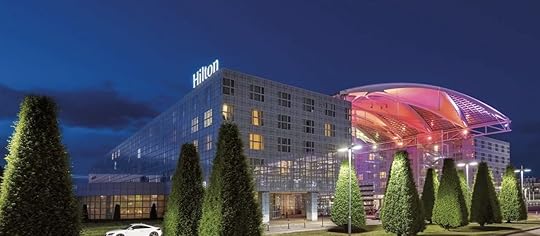
Photo: Hilton
You’re likely going to be drinking a good amount of beer while in Munich, so make your departure as responsibility-free as possible by staying at the Hilton Munich Airport. It’s walking distance from both Terminals 1 and 2 and is designed to feel like you’re in a luxury lodge high in the Alps. Charles Lindbergh, the hotel’s upscale buffet restaurant, switches up its themed buffets each week, taking inspiration from other countries — which should make a nice break from the schnitzel and pretzels you’ve gorged on throughout your time in Munich.
4. Westin Denver International Airport — Denver, Colorado

Photo: photo-denver/Shutterstock
Denver’s airport is 27 miles from downtown in a setting that looks more like the open plains of the Midwest than the jagged mountain landscape that Colorado is known for. If you’re staying anywhere west of Aurora, an early morning flight means leaving the hotel before sunrise and slogging across I-70 towards the plains. Or you could book a room at the Westin Denver International Airport, an addition to the Jeppesen Terminal that opened in 2015. The hotel was built to look like those little airplane wing pins that airlines used to give out to kids back when legroom and free checked bags were a normal thing. It features an in-house art gallery and an outdoor plaza that hosts everything from business meetings to an annual beer festival, and when the time comes to actually head to the gate, the security checkpoint is just downstairs.
5. Crowne Plaza Changi — Singapore
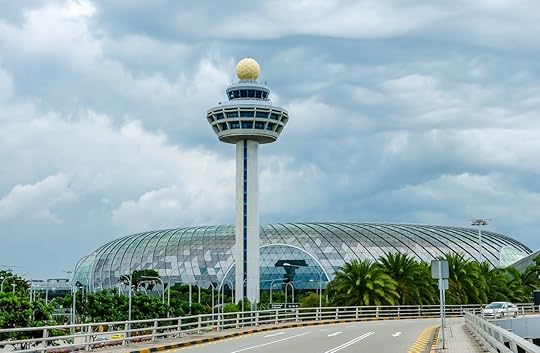
Photo: The Light Lab/Shutterstock
As far as modernity and architecture are concerned, Singapore is the best-looking city in the world. The Crowne Plaza Changi keeps up the image within the already ridiculously attractive Changi International Airport. It’s located within Terminal 3’s Skytrain reach and comes with access to Jewel, the self-described “rain vortex” inside the terminal that is actually the world’s largest indoor waterfall, inside the hotel’s Forest Valley. This sounds like something out of Fern Gulley, and that’s pretty much what it is. It can go toe to toe with the Gardens by the Bay as the coolest thing you saw in Singapore.
6. Grand Hyatt DFW — Dallas, Texas

Photo: Grand Hyatt DFW/Facebook
You don’t have to dive into the Gulf of Mexico to do some saltwater swimming in Dallas if you pay a visit to the rooftop saltwater pool at the Grand Hyatt DFW. Another cool thing about staying inside the Dallas airport is that you can actually walk to the airport’s best food court and some great shops pre-security, which is ideal for acting like you totally didn’t forget to buy your significant other a gift on your trip. If a bit of privacy is in order, order room service from the McCoy’s Bar & Grill inside the hotel.
7. Sofitel London Heathrow — London, England

Photo: Sofitel London Heathrow/Shutterstock
Sofitel apparently set out to build London’s best spa inside Terminal 5 at Heathrow Airport. Whether or not you were overwhelmed by the massive urban jungle that is London, the Sofitel London Heathrow is worthy of your final night in town, if only because of the spa. There’s also a Champagne bar for those who have had their fill of gin. Either option is the perfect way to celebrate the fact that you don’t have to worry about missing your tube time in the morning. 

More like this: Why you should consider the bathroom above all else when booking a luxury hotel
The post The 7 best hotels inside airports where you can actually rest appeared first on Matador Network.

Honeyfunds are a scam

A few years ago I got a wedding invite. Like a lot of wedding invites, it looked like the bride and groom had been price-gouged into sending out something that looked more like the announcement of a Restoration Hardware. It was on grey matte, 32-point cardstock with raised purple lettering and a beveled edge. I don’t know how one even bevels cardstock, but they found a way. It was the only piece of paper I could ever feel actively judging me. It cost more than my lunch to mail.
The RSVP card — complete with custom postage stamp — politely told me that “In lieu of shopping for gifts, you may conveniently make a donation to our Honeyfund!” Then gave me a link to honeyfund.com/danandrachel*.
Curious, I typed it into my phone and was presented with a lovely array of gifts I could purchase for their upcoming trip to Tahiti. I could chip in for a couple of business-class plane tickets. Or pay for them both! I could spring for a couples’ massage. I could buy them scuba lessons. I had a venerable catalog of things I’d likely never be able to buy for myself but was being encouraged to buy for them.
Dan and Rachel were clearly confused about what a wedding gift really is.
When you’re in the part of life when the only thing you get more of in the mail than student loan notices is wedding invitations, getting that invite isn’t like winning a vacation on Press Your Luck. It’s getting a Whammy.
Because what that violet-embossed fuck-you really says is:
“You’re invited to a wedding on the other side of the country! To get there you’ll need to take at least one vacation day and fly during peak times, then pay for the only hotel in a 30-mile radius, where we’ve booked a special rate for you of $289 a night! You don’t rate a plus-one, so you’re on your own paying for that. You’ll also need to find places to eat and drink while not at the wedding, possibly rent a car, and definitely need to buy us a present!
For your trouble, you’ll get to watch me profess my eternal love to someone I met on a dating app 16 months ago, a banquet dinner, and an open bar that closes at 9:00 PM.
Now here’s a link to some amazing adventures you can buy us!”
You see how that last part gets a little face-slappy, right?
The one… ONE… saving grace of going into a debt-frenzied wedding was the ability to passive aggressively show your general resentment about it by leaving them with a big box from Oster.
You know Oster. It means, “I spent my entire last paycheck to come to this wedding, so here’s something that’ll heat bread real fast.”
And now you’re robbing me of that joy and want me to kick in for your scuba lessons? You can’t really be serious.
And the sad fact is… often the couples are not serious. Depending on how said “Honeyfund” is set up, it can function more as a way to encourage people to give cash than to ACTUALLY pay for scuba lessons or massages or anything having to with a honeymoon. For some, it’s a sly-handed way of asking for money towards the cost of the wedding, effectively making the “wedding gift” more of a cover charge.
I’m not saying that’s what everyone does. But much like the Red Cross and literally every TV church ever, your money isn’t always going where you think it is.
Now you might say, “If you hate shelling out for weddings so much, then just don’t go.”
Sure, I COULD do that. But a wedding invitation isn’t so much an invitation to a wedding but an invitation to give a wedding present, with the offer of a free dinner and open bar in return. Failing to either attend or send a gift, I’m now squarely on the list of “friends” who “didn’t even come to our wedding… OR send a gift.”
You might also point out that weddings are painfully expensive, and it’s the least I can do to show some empathy toward the exorbitant expense and help them out a little. And I get that sentiment; I really do. But the easier thing to do is NOT HAVE SUCH AN EXPENSIVE WEDDING.
Your friends, if they care, would show up to a backyard barbecue with canned beer and folding chairs. And if you care, you shouldn’t expect anything from them but their presence a long way from home. Or a short way. Weddings aren’t transactions; they’re celebrations. And if you truly want a sincere experience, leave the Honeyfund link off your invite.
*Dan and Rachel are not their real names. But we alllllll know a Dan and Rachel. 

More like this: The 7 most fascinating wedding traditions around the world
The post So now I’ve gotta help pay for your honeymoon too? Just say no to Honeyfunds. appeared first on Matador Network.

Best breakfast spots in Toronto

Toronto is one of Canada’s most multicultural cities, and you’ll find this perhaps best reflected in the food. Whether you’re craving dumplings in a busy dim sum house or you’d like a vegan spread to fuel your day of sightseeing, Toronto’s restaurant scene is just as diverse as its population. While there are plenty of places to choose from, these eight local breakfast spots across the city will give you the perfect kickstart to your day.
1. Kost
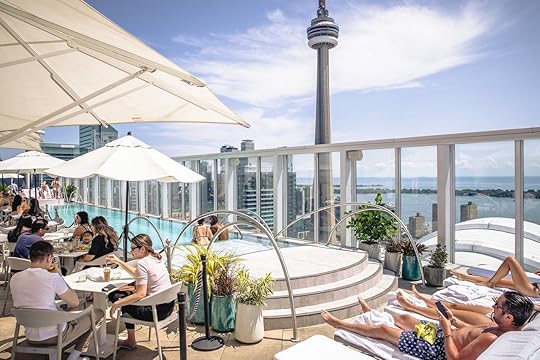
Photo: KŌST/Facebook
If you’re looking for breakfast with a view, Kost has you covered. The restaurant has panoramic views of the city thanks to its location on the 44th floor of downtown Toronto’s swanky Bisha Hotel. The dishes are inspired by the Baja Peninsula, offering California-style energy bowls, coconut pancakes, and avocado toast. For an extra health boost, you can order a cold-pressed juice with your breakfast. Kost is on the pricier side, but it’s worth it for the Instagrammable views and health-conscious meals.
Where: 80 Blue Jays Way 44th Floor, Toronto, ON M5V 2G3, Canada
2. Maha’s Egyptian Brunch
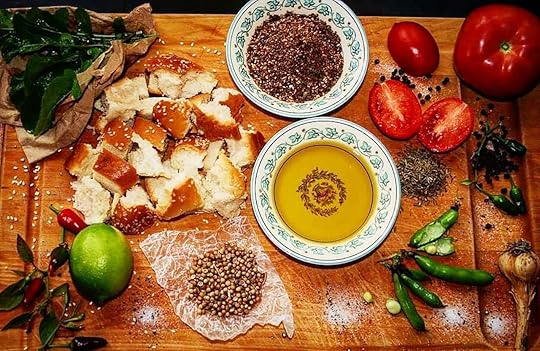
Photo: Maha’s/Facebook
This tiny Egyptian cafe is a true family affair that’s been serving up breakfast to Torontonians since 2014. Everything is made in-house by the cafe’s owner and her daughter, and the owner’s son runs the front taking orders and making drinks. Decor imported from Egypt matches the inventive, Egyptian-inspired menu, which includes foole (fruit folded into whipped cream or custard), baladi bread (Egyptian flatbread), falafel, and lentil soup. All the meat on the menu is halal. Maha’s Egyptian Brunch is open every day except Wednesdays.
Where: 2226 Greenwood Ave, Toronto, ON M4L 2R2, Canada
3. Dim Sum King
This dim sum staple is in the heart of Toronto’s Chinatown. Adorned with Chinese lanterns suspended from the ceiling, it encompasses everything great about Cantonese dim sum. During breakfast, carts circulate the dining room stacked with bite-size dishes like steamed shrimp dumplings, Beijing duck, and steamed buns that diners can flag down to share at their table. Dim Sum King is the spot to enjoy a shared breakfast among family and friends.
Where: 421 Dundas St W, Toronto, ON M5T 2W4, Canada
4. Aunties and Uncles
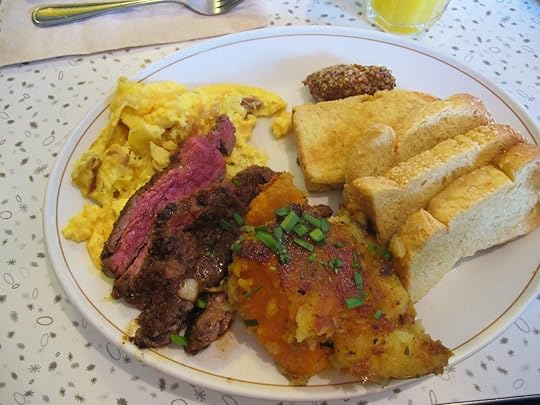
Photo: Aunties & Uncles (Toronto)/Facebook
This country-style diner is a long-time favorite among locals in Toronto’s West End. Aunties and Uncles has a cozy atmosphere inside thanks to the many trinkets and wall hangings. The atmosphere is more like an antique market than a diner. In the summer, you can enjoy your breakfast on the quiet outdoor patio. The breakfast fare is comfort-focused, revolving around omelettes, sandwiches, soup, and french toast — all for a reasonable price. Be sure to go early because this place fills up fast.
Where: 74 Lippincott St, Toronto, ON M5S 2P1, Canada
5. Saving Grace
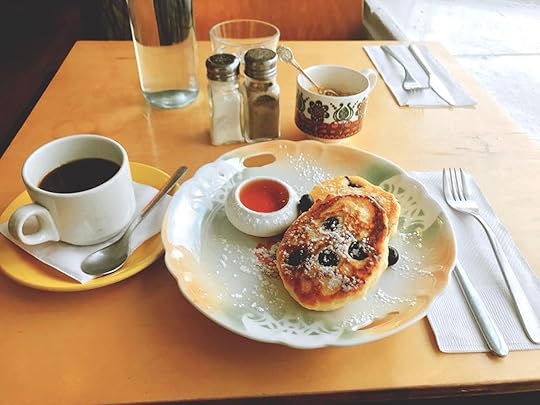
Photo: 双下巴凱利/Facebook
This small, all-day breakfast spot is known for its vast array of dishes, so you can expect to wait in line every day of the week. Although the interior is simply decorated, the dishes on offer are far from bland. French toast is Saving Grace’s claim to fame: It’s dipped in egg, milk, and nutmeg; comes with banana slices; and is covered in sugar. If you’d like something less traditional, go for the carrot cake waffles or eggs Rajasthani, the latter of which is inspired by street food in Rajasthan, India. It’s open every day of the week, but aim to go on a weekday to (hopefully!) beat the lines.
Where: 907 Dundas St W, Toronto, ON M6J 1V9, Canada
6. Mars Food
Mars Food has been serving out-of-this-world greasy breakfasts since 1951. Today, the diner remains mostly as it was back then, with vinyl stools, a chrome lunch counter, and tiny booths. The menu matches the retro diner aesthetic. Every iteration of eggs imaginable is on offer, as well as pancakes, waffles, sandwiches, and homefries. An added bonus? Mars Food is one of the few places in Toronto where you can grab a sit-down breakfast for under $10.
Where: 432 College St, Toronto, ON M5T 1T3, Canada
7. Baddies

Photo: Baddies Toronto/Facebook
This spot’s owner is an Australian who wanted to create an Aussie-inspired cafe. Two things Baddies takes seriously are coffee and food presentation. The cafe has a top-of-the-line espresso maker for perfect coffees, and each dish is Instagram-worthy. Whether you order the vegan chia pudding or spiced sausage sammy (along with a perfectly crafted flat white), your dish will practically be begging for you to take a photo. Baddies also has a convenient grab-and-go counter in case you need a quick and affordable takeaway breakfast.
Where: 679 Lansdowne Ave, Toronto, ON M6H 3Y9, Canada
8. Mildred’s Temple Kitchen
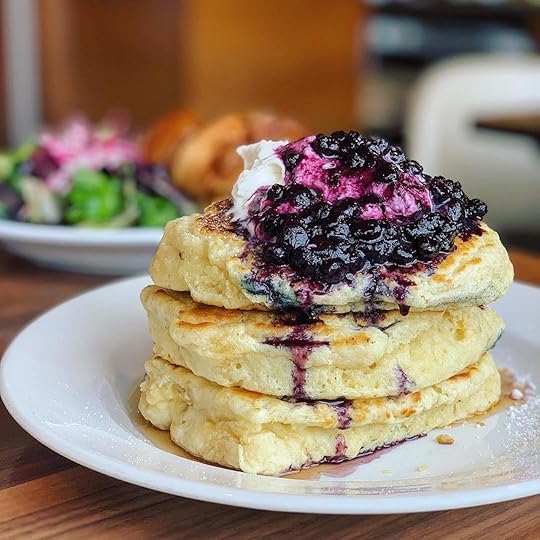
Photo: Mildred’s Temple Kitchen/Facebook
Midlred’s is committed to serving dishes made of locally sourced, seasonal ingredients. Its take on breakfast is: “b’lunch.” Throughout the week, Mildred’s Temple Kitchen offers a morning menu that includes a mixture of classic breakfast options (think scones and buttermilk pancakes) and lunch favorites (hamburgers and chicken avocado clubs). If you swing by on the weekend, you can expect a classic brunch of steak and eggs plus splurge-worthy cocktails.
Where: 85 Hanna Ave #104, Toronto, ON M6K 3S3, Canada 
The post The 8 best places for breakfast in Toronto appeared first on Matador Network.

What it's like to move to Philly

Newcomers to Philadelphia are in for a real treat — the city is fun, filled with history, and has an amazing restaurant scene. But some stereotypes about Philly are slow to die, so you’re bound to run into plenty of surprises upon moving. Whether it’s how cheap life is there, how easy it will be to take a dip in the Atlantic, or how hard it will be to meet people when you arrive, there’s a lot that outsiders misunderstand about Philly. We’re here to dispel all of the lies that you are likely telling yourself when you decide to become our neighbor.
1. You’re going to save so much money.
The cost of living here may be cheaper than in other large-scale US cities, but the housing market is very hot, and prices are seriously on the rise. If you manage to get a decently priced rental, we can guarantee you’ll find other creative ways to spend your money once you’re here. Eating your way through the award-winning restaurant scene comes to mind.
2. All those BYOBs will make your life easier.
BYOBs are definitely a thing here, and for the most part, you’ll want to eat at all of them. What you won’t be able to do, however, is simply pop on over to the liquor store and pick up a bottle of what you need when you need it. The weird liquor laws in Pennsylvania will make sure it’s at least somewhat of a struggle for you.
3. Philly is a small city.
Philly is not NYC, but it’s not the countryside either. While it’s true that you can kayak on the Schuylkill and roam the Wissahickon trails, Philly is not the sticks. The city is a sprawling metropolis that reaches far into Pennsylvania and is home to 1.5 million people.
4. You’re going to be close to the ocean.
It’s all relative. Atlantic City is an hour’s drive without traffic, which is never going to happen. Also, you really don’t want to be swimming in the ocean outside of Atlantic City. The other beach towns are at least an hour and a half away but more likely two or more when you factor in the stretches of highway that are packed with other beachgoers.
5. It’ll be hard to make friends.
Despite our reputation as being sarcastic and a little too forward, Philly folks are always up for hanging out with new people. Most of us are very social and jump on the chance to talk up our city to newcomers.
6. You’re going to live on cheesesteaks.
You won’t. You’ll have a couple of them and then probably only do it when you’re nursing a rough hangover or when family and friends are visiting. Otherwise, you’ll find yourself at Wawa munching on a hoagie.
7. There’s no culture in Philly.
Just because we like football and cheap beer doesn’t mean we don’t enjoy some art and culture, too. There are loads of amazing museums, theaters, dance performances, and street art to take advantage of — once football season’s over, of course. 

More like this: 8 terrible things that happen to Philadelphians while traveling
The post 7 lies you tell yourself when you move to Philadelphia appeared first on Matador Network.

August 30, 2019
Six Flags Jersey Devil Coaster video

If you think your roller coaster resume is impressive, you’re about to have a new heavy hitter to add to your list. Any self-respecting coaster aficionado needs to have ridden the tallest, fastest, longest in the world, and that’s exactly what the Jersey Devil Coaster will be in the summer of 2020. Coming to Six Flags Great Adventure in New Jersey, the single-track coaster will be 13 stories high, 3,000 feet long, with speeds topping out at 58 mph. It will feature four trains with 12 seats each, drops as low as 87 degrees, and inclines as high as 130 feet. There will also be special elements like two inversions with a 180 degree stall and zero-gravity roll.
In an official statement, Six Flags Great Adventure said, “We are thrilled to expand our unrivaled collection [of roller coasters] with the Jersey Devil Coaster. Jersey Devil folklore has been a source of fear and intrigue here in the Pine Barrens for more than 200 years, and this iconic piece of New Jersey history inspired the design for this monstrous scream machine.”
The legendary Jersey Devil creature is said to make its home in the Pine Barrens on the outskirts of the amusement park. The myth paints the creature as a kangaroo with a goat-like head and cloven hooves, which was the 13th child of a woman in the Pine Barrens. According to the story, when she learned she was pregnant the mother shouted, “Let this one be the devil,” and sure enough, the baby immediately transformed into the Jersey Devil. 

More like this: The 7 strangest theme parks around the world
The post New Jersey Six Flags is getting the longest, fastest roller coaster in the world appeared first on Matador Network.

Texas man to visit every Starbucks
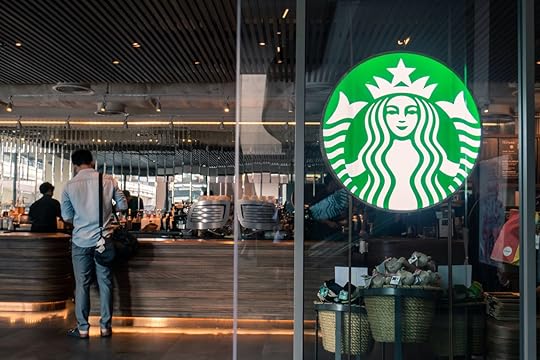
Everyone has an obsession. Maybe it’s craft beer, or videos of kittens, or in the case of a 47-year-old man from Houston, Texas, named Winter (born Rafael Antonio Lozano Jr.), it’s Starbucks. Yes, Starbucks, home of the Pumpkin Spice Latte and the Unicorn Frappuccino, beverages that transcended their humble origins and became cultural touchstones. There is perhaps nothing more equally familiar to every city-dwelling person on Earth than that green sign stamped with a mermaid, and Winter wants to visit every single one on the planet. It’s a goal he’s already spent $150,000 on trying to accomplish.
So far Winter — Indiana Jones of the corporate coffee world — has visited 15,000 Starbucks locations (12,000 stores in the US and Canada, the other 3,000 in 55 locations around the world). His most recent visit was to a Starbucks in Lima, Peru. He has deemed the Starbucks in Fukuoka, Japan, the most beautiful. His second favorite is in Paris, where he says one location resembles a “palace.” Next up, Winter plans to visit Starbucks roasteries in Shanghai and Tokyo. Winter is about halfway through completing his journey: There are 300,000 Starbucks locals worldwide.
One has to give total props to Winter; he is an extremely accomplished traveler, and he’s kind of becoming an influencer, too. Inspired by a website where he documents his travels, a friend of his coined the term “Starbucking,” which in turn has become a mini-trend for other similarly inclined coffee tourists.
None of them are as committed as Winter: He told NBC this is a “lifetime project” that began after he spent countless hours hanging out in a Starbucks in Dallas. And it’s not just the architecture he longs to gaze at. He wants to try the coffee, too. On one trip he consumed 29 cups of coffee in a day. Nothing fancy for him either; he prefers a simple drip coffee.
Winter is a freelance computer engineer, so he has the luxury of working remotely. He also — and this should dispel any doubt that he is truly dedicated to his quest — lives out of his car to finance his travels.
“It’s been instrumental in allowing me to afford Starbucking to the extent I’ve pursued it over the past year,” Winter told NBC.
Can’t fault him for that. After all, he’s living his dream to the fullest, and that’s not something very many people can say for themselves. 

More like this: 7 unique ways people drink coffee around the world
The post Man spends $150,000 on quest to visit every Starbucks in the world appeared first on Matador Network.

Underrated international cuisines

For travelers who plan their vacations around eating, the best food regions are obvious: New York, Japan, Italy, and Vietnam to name a few. These are places where tacos and spicy soups sold from carts are haute cuisine, and dishes of decadent pasta live up to the hype. As timeless as these centers of fabulous food will always be, they are, undoubtedly, inundated with hungry tourists and written about with a reverence that is, frankly, a bit boring. The discerning traveler needs to expand their horizons and visit places where the food is worth celebrating even if it’s not popular among tourists.
There are corners of the globe that are still overlooked or misunderstood when it comes to food — places that never make it onto those “best of” lists or always do for the wrong reasons. Few people know this better than chefs, the people who make it their job (literally) to keep track of places where cuisine of all types shines — even in the shadow of places like Paris.
There are the places every food fanatic should add to their bucket list, according to some intrepid chefs around the US.
1. Southeastern coast of South Korea
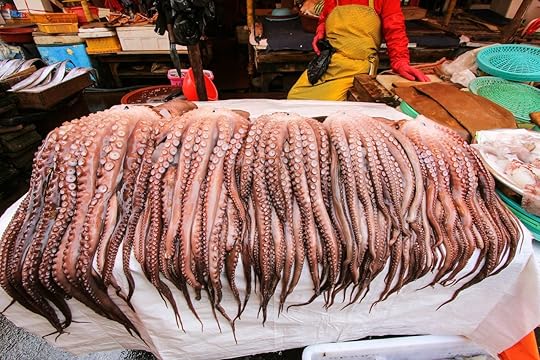
Photo: KYTan/Shutterstock
If you’ve had the pleasure of enjoying Korean barbecue, you probably fell in love with it. It’s all juicy, succulent grilled ribs and tender, thin slices of beef. Red meat is just the tip of the Korean cuisine iceberg, however. The southeastern coast of South Korea is much different. Here, you’ll find fresh-caught seafood still salty and damp from the ocean.
“I’m from Busan, Korea, which is on the coast, so we’re very well known for seafood. Often when people think of Korean food, they think of meat-centric dishes and Korean barbecue, but many of our traditional dishes are actually seafood,” explains chef Yeong Gon Kim of Grand Seoul in New York City’s Chinatown. “A few of the most famous fresh seafood dishes in Korea are san-nakji (live baby octopus), joetgal (salted preserved shellfish with a hint of spice), haesam (sea pineapple), and mungae (sea cucumber). These might seem exotic to other countries, but they’re actually very traditional at home.”
Kim has a point. To Western eyes, some of the food might seem out of our comfort zone (tanks filled with octopuses occupy whole stalls at the fish markets, for instance) but it’s worth trying — if only to better understand the full scope of Korean cuisine.
2. Myanmar
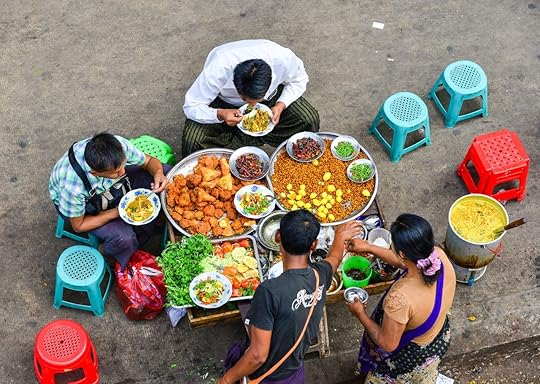
Photo: Phuong D. Nguyen/Shutterstock
Vietnam and Thailand are by now well-known food destinations in Southeast Asia. After all, two of the most beloved Asian dishes in America — phở and pad thai — come from these countries. It probably also didn’t hurt that Anthony Bourdain sat down with President Barack Obama in a roadside restaurant with plastic chairs to chat over bowls of spicy soup. Nearby Myanmar might not be as popular a tourist destination, but its inventive cuisine has much to recommend it.
“Burmese cuisine is influenced by bordering neighbors like India, China, and Thailand,” says Mike Morlas, chef at Chicago’s Sunda. “Dishes coming out from Myanmar are kind of a fusion from those countries. I’m intrigued and fascinated by cuisine from this region, where [they] roast spices before grinding them, which results in a more flavorful dish. Charcoal brazier is still widely used instead of stovetop cooking, which gives grilled dishes beautiful caramelization and deepens the flavors.”
It’s not just the cooking techniques. The dishes themselves inspire Morales.
“Burmese cuisine also consists of a great variety of salad, usually centered on one major ingredients like rice or noodles or fish paste and tea leaves,” he continues. “One of my favorite dishes is Burmese Tea Leaves Salad. The dish fuses flavors and textures like soft, fermented tea leaves with crunchy beans and fried garlic. Consuming tea leaves is so specific to Burmese cuisine, and it’s so delicious and healthy for you.”
Morales says one must-try Burmese ingredient is besan, ground yellow split peas or chickpeas. “Burmese tofu is made with besan, which is non-soy and not related to the Chinese-style tofu that we know. It’s usually consumed fresh in salad or fried like a fritter.”
3. Ohio
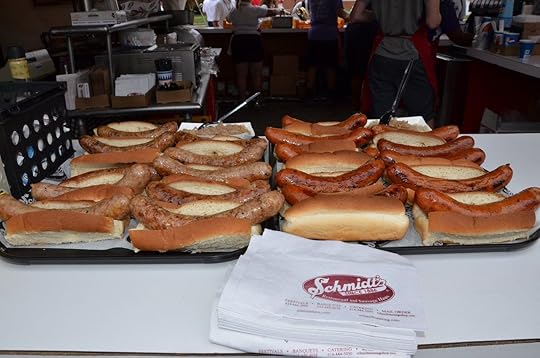
Photo: Schmidt’s Sausage Haus/Facebook
New York City and Los Angeles get the most credit for being the United States’ great food cities, but to dismiss the Midwest would be to miss out on a thriving restaurant scene. Take Ohio, which Andrew Holmes, food and beverage director at First Hospitality Group, praises for being diverse and more adventurous than you might expect.
“This Midwestern state truly is a cross-section of the entire USA,” Holmes says. “Our location gives us such an eclectic culture, which in turn produces a fascinating and diverse food personality. [Columbus] has so many great pocket villages around it with the food scene to support it. Whether it’s Victorian Village for the best tacos — Junior’s Tacos — to Schmidt’s Sausage Haus in German Village. The place is an institution. There’s only one order when you go: their house-made sausages.”
4. North Carolina

Photo: Highland Avenue/Facebook
The South is finally getting the recognition it deserves for food that has long been sublime, even before the rest of the country “discovered” it. Charleston in South Carolina, which chef Ryan McCaskey of Chicago’s Acadia calls “exciting and energetic,” is having a moment that never seems to end. The city has spots that tourists seem magnetized to, from Sean Brock’s Husk to The Ordinary.
However, chef Bill Greene of the Charlotte, North Carolina, restaurant Peppervine thinks it’s time for western North Carolina to stop living in Charleston’s shadow.
“The juxtaposition of local ingredients with global influences, such as the use of North Carolina seafood and worldly flavors, is a huge part of the food culture here,” explains Green. “Southern staples like pimento cheese take new forms like pimento cheese scones or pimento cheese focaccia — not your typical cheese spread and saltines. Restaurants in this area are also building impressive wine lists, challenging the conceptions of what you can find here.”
Green recommends visiting small cities like Hickory, where restaurants like Cafe Rule and Highland Avenue “showcase true contemporary Carolina cuisine.”
5. Senegal

Photo: Shadow design/Shutterstock
Unfortunately, many Westerners don’t know much about African cuisine, except for perhaps Ethiopian food. However, one chef thinks the aromatic flavors of Senegalese food — which incorporates rich, earthy ingredients like garlic, peanuts, lamb, and lentils — is overdue for the spotlight.
“Senegal has a rich food culture that blends African and French cooking,” says Kristen Thibeault, executive chef at the catering company Nyball. “One of my favorite meals is yassa poulet with turmeric fonio pilaf. It’s a bold dish that marries grill lemon habanero chicken thighs with a tart sauce of caramelized onions, green olives, and dijon mustard.”
Beyond Senegal, Thibeault shows her appreciation for a staple ingredient common throughout Africa: fonio, a high-protein grain similar to quinoa or couscous. She uses fonio to create her own Senegal-inspired dishes at home.
“Fonia is one of the best-kept secrets of the African continent,” she adds. “Its nutty flavor is incredibly versatile and works perfectly with most proteins. With the yassa, I like to do a bright yellow turmeric pilaf that includes roasted sweet potatoes, ginger, black-eyed peas, and minced dates.”
6. Rural Louisiana
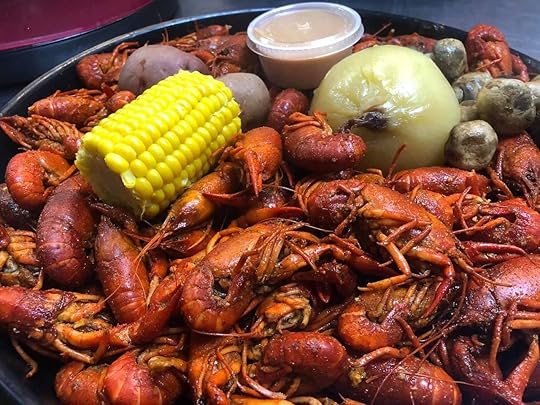
Photo: Cajun Claws Seafood Boilers/Facebook
By now, New Orleans is well established as one of the food capitals of the world, but Cajun food has deep roots throughout the state that are worth exploring.
“Louisiana Cajun country is one of the best places to eat in the world,” says chef Alon Shaya, who opened New Orleans restaurant Saba last year. Shaya recommends traveling beyond that iconic city to experience the full scope of cajun flavors. “While most people come to New Orleans expecting to get a taste of the real Cajun experience, it’s just not the same.”
Part of that real taste means not sticking to restaurants.
“You have to head out towards Lafayette and stop in Krotz Springs. Pull up to Kartchner’s grocery store for fried boudin balls, smoked boudin, head cheese, and cracklings,” he says. “Eat that with mustard and saltines in the parking lot on the hood of your car. The heat from the engine will warm the head cheese just right.”
Shaya also recommends dinner at Prejean’s in Carencro, Louisiana, for chicken and andouille gumbo with potato salad. And, Shaya emphasizes, if you’re in Louisiana, sampling the seafood must be high up on your to-do list.
“Drive down to Abbeville and stop into Shucks restaurant for the best fried shrimp, oyster stew, and bread pudding with whiskey sauce you’ll ever have,” he advises. “If you’re there in the spring, during crawfish season, a stop at Cajun Claws in Breaux Bridge is mandatory for their succulent and addictive boiled crawfish.”
7. Eugene, Oregon

Photo: Marché/Facebook
Oregon is most widely known for Portland, stereotyped as the land of hipsters and endless coffee shops. But if you’re in the market for locally sourced, fresh ingredients, Oregon has so much more to offer — namely in Eugene. Yes, the city has more to love than those yellow and green Ducks.
“Eugene is a hidden gem for ingredient-driven cuisine,” says chef Rocky Maselli of Marché. “We have the perfect combination of climate, fertile soil, a thriving wine industry, and proximity to the ocean — a cuisine has developed here that is distinct to our place in the world. Our local ingredients — Chinook salmon, Dungeness crab, every wild mushroom that you can imagine (including white and black truffles) — inspire me and other local chefs to cook seasonally and locally. Every season brings something new — it really doesn’t matter what time of year you visit, there is always something to celebrate and enjoy in the southern Willamette Valley.”
8. Mexico’s Pacific coast and northern states

Photo: Esdelval/Shutterstock
There’s no doubt that Mexican cuisine is among the most popular and appreciated on the planet. But to truly understand the depth of this country’s food culture, you must look beyond red-meat-filled tacos. Several chefs I spoke with heaped praise upon regions in Mexico they’ve noticed are still going unexplored by culinary adventurers. The seafood offerings in particular stand out.
“Located on Mexico’s beautiful Pacific coast, Zihuatanejo is known for its rich history as a fishing village and its abundance of native produce,” Miguel Baltazar, executive chef at the Thompson Zihuatanejo hotel, says. In particular, he mentions a type of regional mango called ataulfo and chocolate habaneros.
On the coast, you’ll find towns with mercados where you can pick your fresh-caught fish and have it prepared in front of you two counters over. Or head to enramadas, local seafood restaurants that make seasonal dishes with recipes passed down through generations.

Photo: Robert Briggs/Shutterstock
The northern region of Mexico is worth exploring too, where wheat, not corn, is the primary crop. That means a focus on the underappreciated flour tortilla. This seemingly small deviation in agriculture has big consequences for the cuisine.
“I recently visited Hermosillo in the northern state of Sonora, Mexico, and was astounded by the cuisine,” gushes Mary Sue Miliken, co-chef, alongside Susan Feniger, at Border Grill in Los Angeles. “They grow fantastic wheat and make the thinnest, tenderest, largest tortillas imaginable. They are immediately filled with delicious soupy beans and stews of beef, pork, chicken, cabesa, or lengua and rolled into petite burritos — irresistible. Also impressive were the brown-sugar-filled coyotas made of flaky pastry and baked in a wood burning oven.”
Feniger has her own beloved region of Mexico, called Merida. Though she visited for the first time many years ago, she can still recall the exquisite fresh seafood served at a street-side taco stand that made her fall in love with the city.
“Merida is a hidden gem for great quality Yucatan dishes. I remember when Mary Sue and I visited Merida in 1983, we were standing outside and we were drawn to this man with a little station displaying fresh lobster, shrimp, and salmon,” she says. “He made us chilled fresh fish tacos in a tiny tortilla held in his hand and topped it off with peas, aioli, radish, olive oil, and a splash of naranja agria. He handed us two little tacos and two beers, and I can still taste it!”
Feniger recommends eating botanas-style for the “ultimate local experience,” which might remind some visitors of eating tapas in Spain.
“Botanas literally translates to ‘snacks’ in English” she says. “You order a round of drinks and delicious and traditional small dishes are served — it’s a great way to try a variety of plates, but you have to love drinking and loud places.”
Still unsatisfied by this mini-tour of Mexico’s most underappreciated cuisine? Let chef Pati Jinich take you to Sinaloa, where she recently visited while filming a documentary for PBS called Pati’s Mexican Table. There, she discovered — you guessed it — more impeccably prepared seafood.
“As I explored Sinaloa from tip to tip, I realized that not only is it home to extraordinary ingredients, with river water flowing through mineral-rich soil ending in sea water, making for really fabulous produce and seafood, but also to a cuisine largely unexplored by outsiders,” Jinich explains. “People abroad don’t know much of Sinaloan cuisine, except for maybe its iconic chilorio [a spicy pork dish] or machaca [dried and spiced beef or pork that’s re-hydrated before serving]. Slowly but surely more of its dishes are starting to be known, like aguachile, pescado zarandeado, and some of its unique ingredients, like the chiltepin.”
9. Idaho
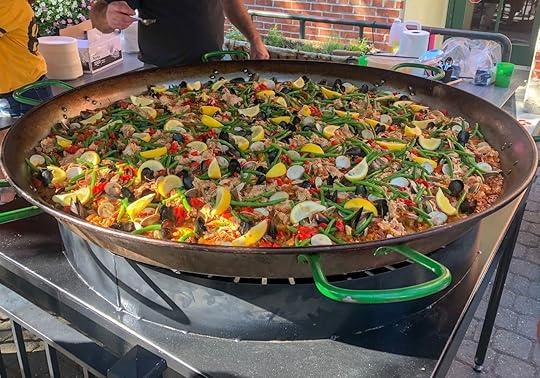
Photo: CSNafzger/Shutterstock
Idaho doesn’t get a fair shake. Most people think of it as hot, dry, surrounded by desert mountains that can’t possibly support interesting ingredients. They skip right over it and head to Washington if they’re in the mood for a culinary treasure hunt. That would be a mistake, as it turns out.
“Everyone thinks potatoes when they think of Idaho, but we have the largest Basque population in the US,” says chef Richard Langston, owner of Richard’s in Boise. “One of my favorite restaurants — and a great late-night spot for cooks — is Bar Gernika, a Basque pub with solomo sandwiches, lamb kebabs, and beef tongue, local beer and Old World wines. I always start with an order of croquetas and pour on the Tiger Sauce. I also watch for paella night at the Basque Market where they cook in their huge skillet right out on the sidewalk.”
Neighboring Washington gets all the credit for having the best seafood, yet Idaho has a few fish of its own worthy of consideration.
“We have great fish here in Idaho: golden trout, steelhead trout, and sockeye salmon with some very sustainable farming, as well as wild caught choices,” says Phil Winchester, chef de cuisine at The Limelight Hotel Ketchum in Sun Valley. Winchester praises Idaho for the quality of ingredients farmed in the state.
“Idaho also is home to some of the best beef in the country,” he says. “Snake River Farms is world-famous for their wagyu and just a couple of hours away from Ketchum, and I haven’t tasted a better grass-fed lamb than what I get from Lava Lake Lamb. Elkhorn Ranch South is where I get my pork from; their pigs are pasture-raised, purebred heritage Berkshire and Large Black hogs.”
10. Iran
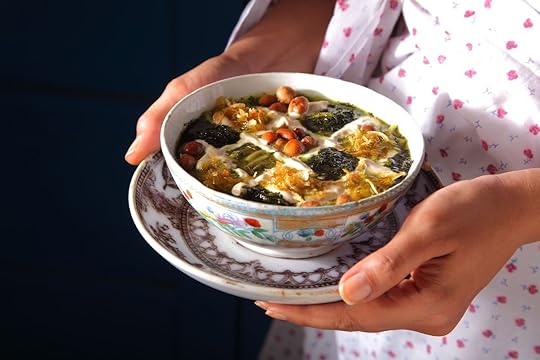
Photo: Shahram Jafari Studio/Shutterstock
It’s time the Middle East got its due. Ancient culinary traditions come to life in this region, infused with rich spices and fragrant ingredients like pistachios. One of the most palette-stirring countries is Iran, a destination almost always overlooked by travelers.
“Persian cuisine is completely underrated. We have limited understanding of this [cuisine] in comparison with Greek or Indian food,” says Nelly Buleje, executive chef at the Grand Geneva Resort & Spa in Lake Geneva, Wisconsin. “As a fan of Mediterranean food, I’m on a mission to introduce foods like falafel to the Midwest. Jeweled rice dotted with brightly colored dried fruits and nuts is delicious. Pistachios, almonds, carrots, and saffron in the rice dish goes great with a chicken kabob called jooje, topped with a refreshing cucumber and herb yogurt sauce called mast-o khiar.”
11. Israel

Photo: Maria Sbytova/Shutterstock
Iran isn’t the only Middle Eastern country with cuisine you need to be paying attention to. Jason Hanin, executive chef at The Ebbitt Room in Cape May, New Jersey, sees the influence of Israeli ingredients catching on in the United States.
“Israel is a melting pot of so many cooking styles — eastern European, North African, Iranian, Palestinian, Lebanese, and so many other cultures that date back over 2,000 years,” he says. He calls out spice blends like ras el hanout, za’atar, and dukkah, as well as ingredients like cauliflower and eggplant. “What also makes it so special is the quality of ingredients. And the rustic, yet elegant, simplicity of the food.” 

More like this: The best food to make while camping, according to chefs
The post The most underappreciated food regions in the world, according to chefs appeared first on Matador Network.

Best Burning Man 2019 art

Burning Man, the gathering dedicated to art and community that takes place yearly in Nevada’s Black Rock Desert, kicked off on August 25 under the theme of Metamorphoses. And, like every year, artists from all over the world took on the challenge. Through captivating, gorgeous, and playful installations, they expressed the motif of supernatural transformation for the greatest pleasures of the Burners. For those who could not attend this year’s event, here’s a roundup of the coolest art pieces to be found in the desert this year until September 2.
1. “Stone27”
View this post on InstagramA post shared by Bjarke ingels (@bjarkeingels) on Aug 27, 2019 at 2:59pm PDT
The most popular installation at the gathering is probably Benjamin Langholz’s “Stone 27,” a circular staircase rising 20 feet above the Playa (the dried-up lakebed where the event takes place at the end of each summer) that invites Burners to take a meditative walk up in the air. Made up of 27 floating stones that each weigh 1,000 pounds, the installation requires balance and clarity of mind from those who want to try out.
2. “SkyWhale”
View this post on InstagramA post shared by Vit Katаsonov (@vikatasonov) on Aug 25, 2019 at 9:00pm PDT
“Skywhale” is a life-sized whale kite created by Blake Marcus, Chris Welch, and Seven. It is currently flying above the Playa. Instead of its natural habitat, this whale lives above the Burners, in full view of them in a seemingly inhospitable environment for a marine mammal, yet it thrives. The artists’ hope for their majestic creation is that it can change the relationship humans have with nature.
3. “Purr Pods”
View this post on InstagramA post shared by Laser Eyes of Love (@lasereyesoflove) on Aug 29, 2019 at 6:22pm PDT
Keeping the giant air-borne cetacean company are three large, metal, tutu-wearing cats called “Purr Pods”. The adorable kitties (Luna, Scoobydoo, and Vaga), created by artist Paige Tashner, have built-in benches for Burners to sit on and enjoy their sonic vibrations, which feel just like a real purring ball of fur. By day, they look like quiet creatures, but at night, the felines’ eyes shine with friskiness, and their bodies are illuminated with colorful LEDs projecting beautiful shadows on the desert floor.
4. “The Shrine of Sympathetic Resonance”
View this post on InstagramA post shared by Greg Nielsen (@gregvnielsen) on Aug 29, 2019 at 5:21pm PDT
“The Shrine of Sympathetic Resonance” looks a little like a wooden church. The structure consists of five pentagonal rooms surrounding a rising tower, all of which are made of piano harps, antique windows, and piano soundboards (the wooden plates below the strings of a piano that amplify the sound created by their vibrations). Artist Tyson Ayers and Resonant Arts hope that the 10,000 strings present in the installation and their resonance within the structure will help Burners who explore the piece think about the significance of the reverberations of their every word, thought, and action.
5. “Bee or Not To Bee”
View this post on InstagramA post shared by Dancing Burning Man (@dancingburningman) on Aug 29, 2019 at 12:52am PDT
This eight-foot bee in the middle of the dusty Nevada desert is a reminder by artists Mr and Mrs Ferguson that things are changing negatively for the pollinating insect that is responsible for our food supplies. The installation created with broom bristles sits on a flower made of marbles, and you’re invited to touch and spend some time with the creature whose metamorphosis could define ours.
6. “Koro loko”
View this post on InstagramA post shared by Marusia (@remiz_pendulinus) on Aug 26, 2019 at 7:49pm PDT
Because nothing is more transformational than loving and being loved, Emily Nicolosi chose to create a large, three-dimensional heart for Burning Man 2019. The piece, titled “Koro loko,” is made of woven wires covered in dichroic plexiglass squares that reflect all lights and make the structure shine for all to see and admire while on the Playa.
7. “The Monumental Mammoth”
View this post on InstagramA post shared by Greg Nielsen (@gregvnielsen) on Aug 27, 2019 at 7:17pm PDT
This giant piece made of steel and recycled materials was created by a 17-year-old girl scout named Tahoe Mack and artists Luis Varela-Rico and Dana Albany. “The Monumental Mammoth,” a life-sized replica of a Columbian Mammoth, is meant to show Burners that a beautiful past lies underneath the surface of the Nevada Valley (especially Tule Springs National Monument) and that it deserves to be protected and preserved.
8. “Temple of Direction”
View this post on InstagramA post shared by Jô Eridani (@joeridani) on Aug 28, 2019 at 1:59pm PDT
Geordie Van Der Bosch’s “Temple of Direction” is an Asian-temple-inspired space that provides a little time-out for Burners in need of peace and quiet, as well as shade. It is composed of several wooden, see-through square arches stacked behind each other to create a linear pathway whose width changes throughout.
9. “The Folly”
View this post on InstagramA post shared by johan_ziems (@johan_the_domeguy) on Aug 26, 2019 at 6:57pm PDT
This large wooden structure that looks like a Steampunk-meets-Old-West village is the creation of Dave Keane & The Folly Builders. Complete with a windmill and a clock tower, the structure was entirely made of salvaged and reclaimed wood from San Francisco Victorian homes. Full of tight passageways, funky staircases, and hidden corners, “The Folly” is a fun structure for Burners to explore — and the view from the top is supposedly amazing. 

More like this: Burning Man is underway. Has it solved the rich people problem?
The post The most amazing art installations from this year’s Burning Man appeared first on Matador Network.

Where to eat at JFK Airport
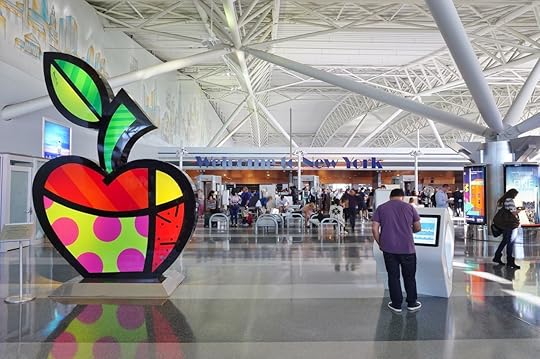
John F. Kennedy International Airport is not New York City’s worst airport. It’s got better food, better drinks, and a better layout than the other options near the Big Apple, though admittedly the bar is low.
The biggest draw is the new TWA Hotel attached to the airport, which comes complete with a rooftop pool bar overlooking the runway, a quality cocktail lounge, and a Halal Guys outpost by the most famous food cart in the city. Even if you can’t make it over and you’re stuck for a couple hours, there’s at least one decent place to eat and drink in each terminal.
Terminal 1
JikJi Café: While located in the food court before security, there aren’t many options once you pass the TSA and head into the pit that is JFK’s Terminal 1. JikJi is a counter service Korean and Japanese restaurant (communal, but not guaranteed, seating is nearby) with options like bulgogi and soup.
Where: pre-security
Idlewild Wine Bar: A wine bar with a focus on domestic wines by the glass and bottle. It’s not cheap, but the selection is good for an airport.
Where: near gate 1
Soy and Sake: If you missed JikJi or are the type of person who worries about spending too long in the TSA line, head to Soy and Sake. The ramen and dumplings are serviceable, and there’s a full bar complete with (as the name suggests) sake and beers from Asia.
Where: near gate 6
Terminal 2
Croque Madame: Crepes, croque madames, and other French-inspired fare. Not the best, but not the worst place for a small meal and a cup of coffee.
Where: near gate 62
BKLYN Beer Garden: The iPad order screens at JFK are a bit soul-sucking. BKLYN Beer Garden makes up for it (somewhat) with more than 20 beers on tap. The food is fine, if airport-level expensive, and the menu features standard beer bar food like burgers and sausages.
Where: near gate 67
Terminal 4
Mi Casa Cantina and Restaurant: Tortas, burritos, guac, and other Mexican food. The drink menu is tequila- and mezcal-focused with a decent selection and good cocktails.
Where: near gate B23
Shake Shack: There’s not one but two of New York’s favorite fast-food burger chain in Terminal 4. Both serve the burgers and fries that made the spot famous, as well as beer.
Where: near gates B23 and B37
Canal St. Noodle House: Comforting Vietnamese food like pho and banh mis.
Where: near gate A3
Blue Smoke on the Road: Started by restaurateur Danny Meyer, this long-named restaurant has a full bar and some of the best airport barbecue. You may be in the North, but this is a great place to get a taste of the South.
Where: near gate B37
Terminal 5
Deep Blue Sushi: The only place in the US where you should seek out airport sushi. It’s a popular spot with a full bar — and worth the price. The to-go options are fine if you’re in a rush.
Where: marketplace in the center of Terminal 5
Piquillo: Paella, sandwiches, and cheese and charcuterie in a dome-roof spot where you can escape from the white-wash airport lighting. There’s a full bar with a wine focus.
Where: marketplace in the center of Terminal 5
Bar Veloce: If you don’t want to deal with the restaurants in the marketplace, head to this modern Italian wine bar for a drink and small plates. It’s the airport outpost of the mini-chain that has locations in Chelsea and East Village.
Where: near gate 30
Terminal 7
Le Grand Comptoir: French-inspired wine bar. Cheese and charcuterie are the go-to food options at this counter-service (comptoir means counter in French) pit stop.
Where: food court
Kobeyaki: A Japanese restaurant chain with ramen, rice bowls, udon, and burgers with condiments like teriyaki ketchum and spicy mayo. Kobeyaki serves sushi, but it’s no Deep Blue Sushi.
Where: food court
Terminal 8
Brooklyn National Deli: New York has many famous delis. This isn’t one of them, but it still has decent pastrami and other deli fare for an airport.
Where: near gate 41
New York Sports Bar: Straightforward, no-frills beer bar with 20 beers on tap and a basic food menu. Wine and cocktails are available as well.
Where: near gate 10 

More like this: What to do with a day in NYC
The post The best bars and restaurants in John F. Kennedy Airport in NYC appeared first on Matador Network.

Matador Network's Blog
- Matador Network's profile
- 6 followers



